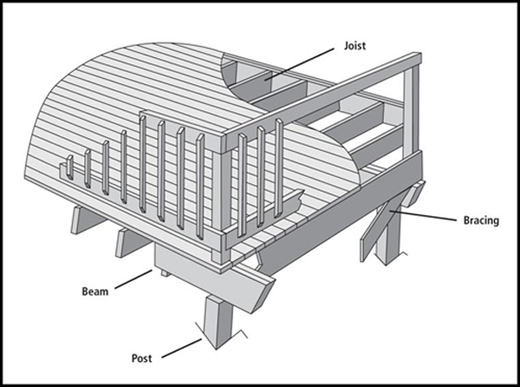When it comes to selecting the right decking for your home, there’s no better product on (or for) the planet than wood. While there are myriad plastic and composite deck products, their manufacture consumes four to six times as much energy as wood.
What’s more, unlike American-grown cypress, which is sustainably grown and harvested, these composite products are typically made from petroleum products, which are an increasingly expensive and limited resource. That makes a cypress deck easier on your pocketbook, too.
To make the most of your investment, make sure the cypress decking materials you purchase are clean and have been dried to the proper moisture content. Installing cypress decking while it is “green” or wet has the potential to lead to cracking, splintering and warping. That means your cypress should be stored in a dry place when you get it home, too.
As for the best lumber grade, any cypress association-graded #2 or better should be sufficient to meet all your deck’s structural requirements. Do not use cypress boards wider than six inches for any application that lies flat, such as deck flooring, seating or railing.
For the balusters, handrails and other visible portions of the deck, Select-grade cypress will yield the most attractive appearance.
Finally, the maximum span for cypress radius-edge decking (R.E.D.) and two-inch dimension lumber should not exceed 16” inches on center.
 |
|
|
|
|
 |





